Make sure to join my list for Weekly Tips and Recipes to Your Inbox
14 Beautiful Sensory Outdoor Learning Spaces Ideas
When I began my Master’s project on the benefits of outdoor learning spaces, I expected some debate, but I didn’t anticipate the sheer volume of frustration from passionate educators who wanted to accept nature-based learning but found themselves trapped by limitations.
For many, the dream of sensory outdoor learning spaces fades fast under the weather and a lack of administrative support. Despite the convincing research behind outdoor education and emotional benefits, the path to implementation is blocked before the gate even opens.
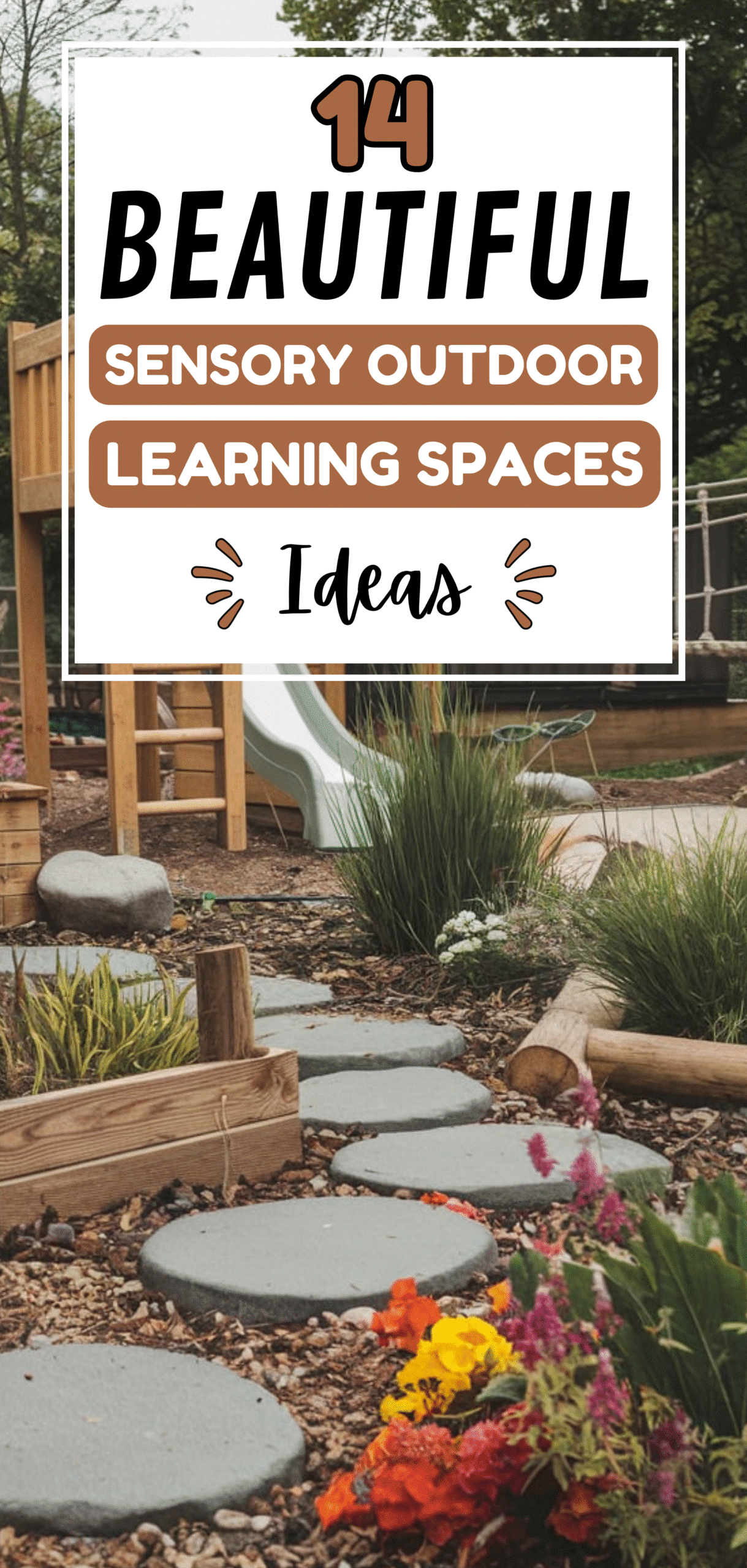
For some, “outdoor education” brings to mind epic field trips to state parks or interactive science hikes, both rich in opportunity but heavy with financial and logistical burdens.
The solution lies not in abandoning the idea, but in rethinking how we define outdoor learning spaces. We can start to think about them as sensory-rich activities that are perfect for our educational objectives rather than an extension of inside classrooms. This could mean adding seasonal gardens that support science and art, or just outdoor nooks for reading.
And that’s exactly what my Master’s project aims to uncover: how we move from theory to practice and give every child access to the outdoor classroom they deserve.
14. Barefoot Sensory Pathway
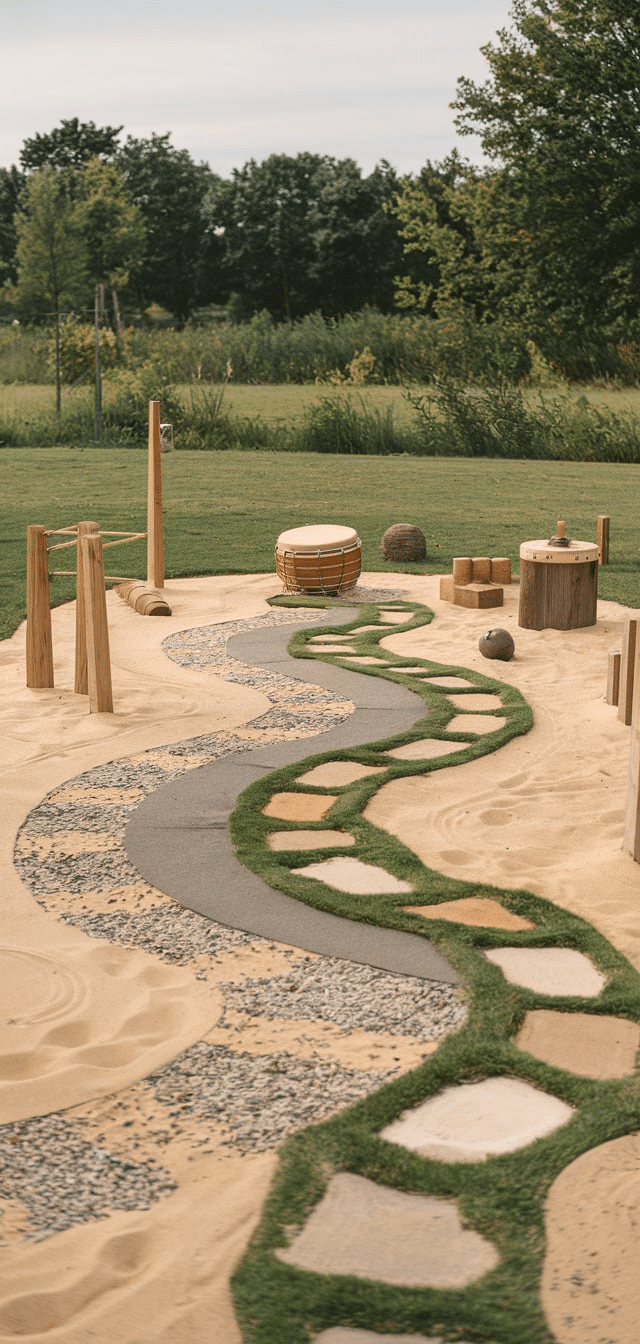
A barefoot sensory path uses a series of textured materials arranged in a safe sequence for children to walk on, encouraging tactile exploration through their feet.
Tips to Make It Easy:
- Use natural materials: pebbles, sand, bark, grass, smooth tiles, mud, and water.
- Frame each section with wooden planks or rubber edging for containment.
- Include visual signs to prompt reflection: “What does this feel like?” or “Does it tickle?”
Maintenance Note: Regularly check for sharp debris or weather damage.
13. Sound Garden
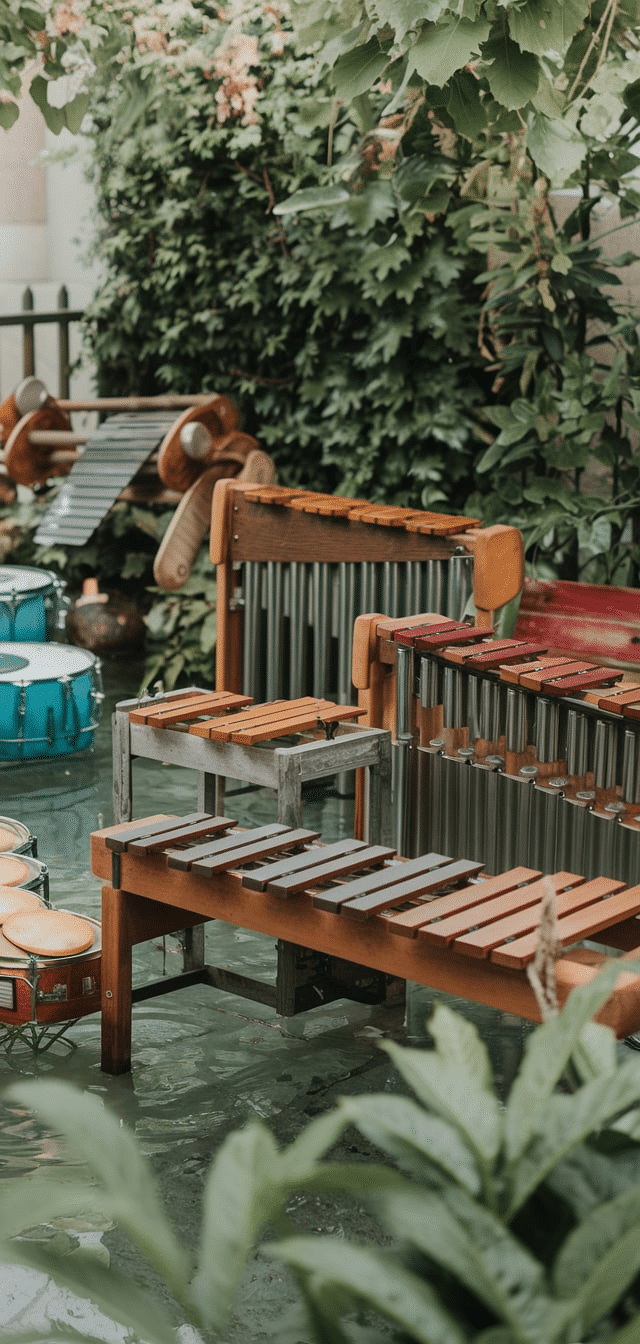
This space encourages auditory exploration using musical instruments made from repurposed or natural materials.
Materials to Include:
- Hanging chimes (metal, bamboo)
- Steel drums from recycled barrels
- Xylophones using PVC or metal piping
- Maracas made from bottles and pebbles
Design Tip: Arrange instruments in a circle to encourage cooperative play and rhythmic interaction.
12. Tactile Wall or Fence Panel
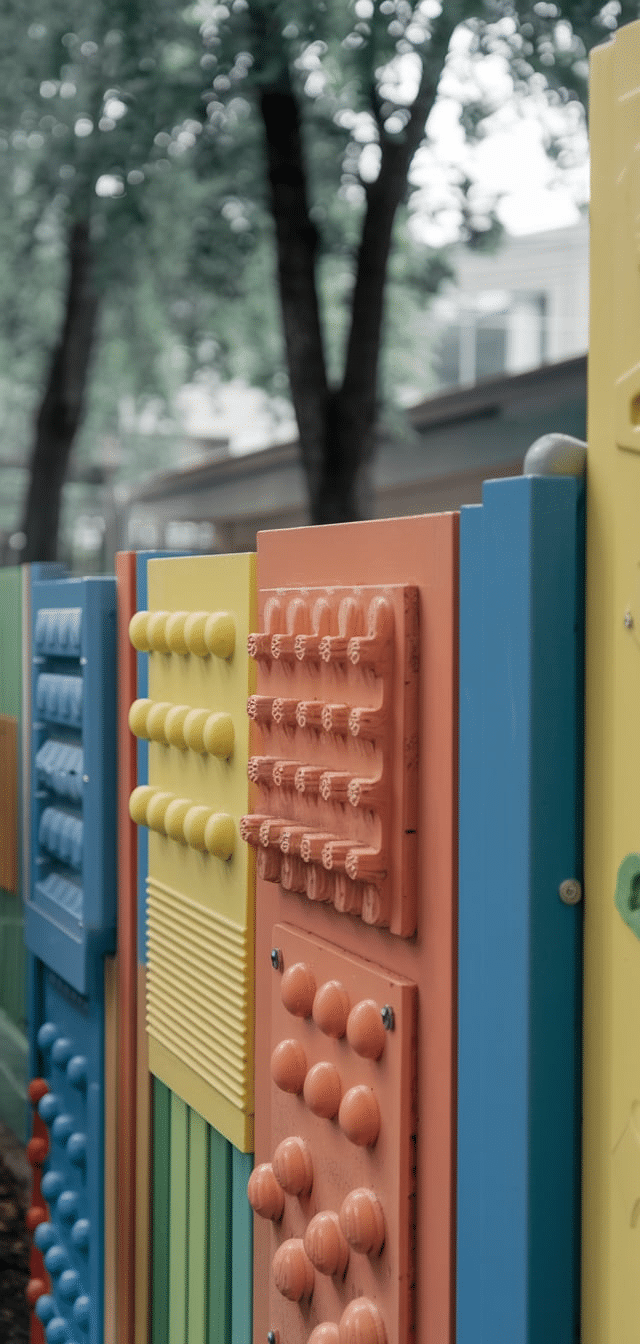
A tactile wall invites hands-on discovery through various textures and surfaces.
Ideas to Include:
- Burlap, fake grass, corrugated metal, rubber tiles, sandpaper
- Mounted zippers, latches, and knobs
- Mirror tiles for visual stimulation
Accessibility Tip: Install at different heights to accommodate standing and seated users.
11. Mud Kitchen
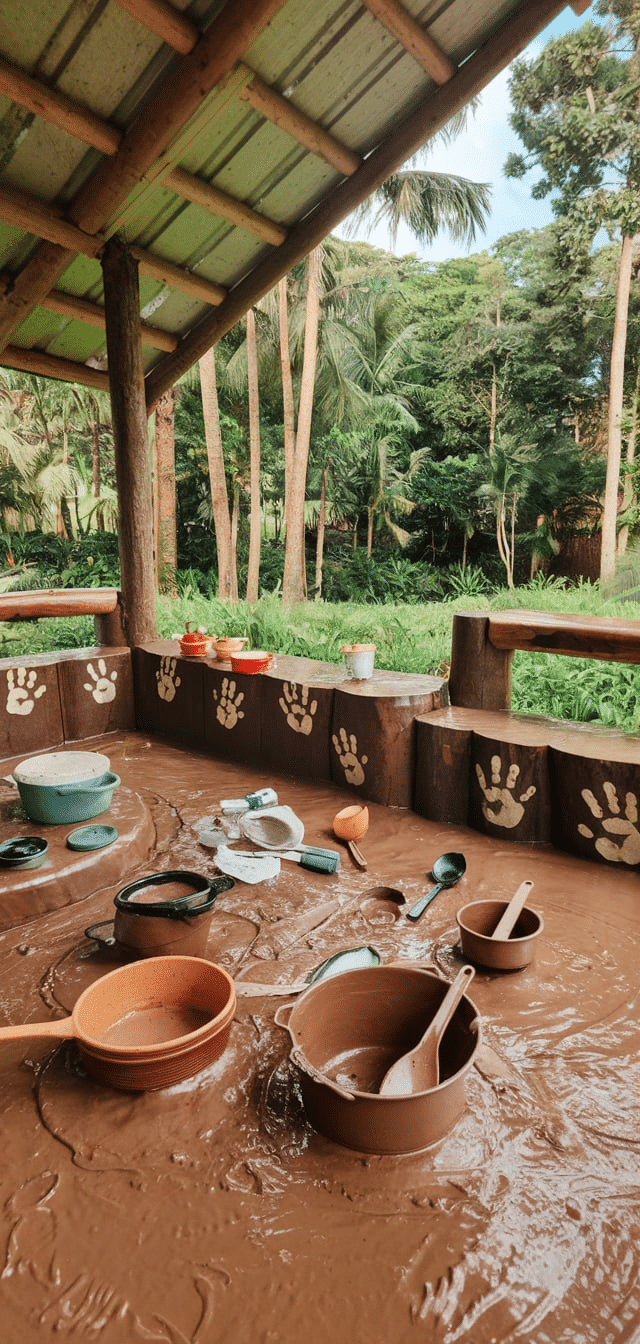
This messy, open-ended area lets children combine water, soil, and natural materials for pretend cooking and potion-making.
Setup Checklist:
- Old pots, pans, wooden spoons, muffin trays
- Low bench or repurposed wooden cabinet
- Water source (bucket, hose, or rain barrel)
- Nearby herb garden for natural “ingredients”
Cleaning Tip: Include a rinse bin to wash hands and tools easily.
10. Living Willow Tunnel or Dome
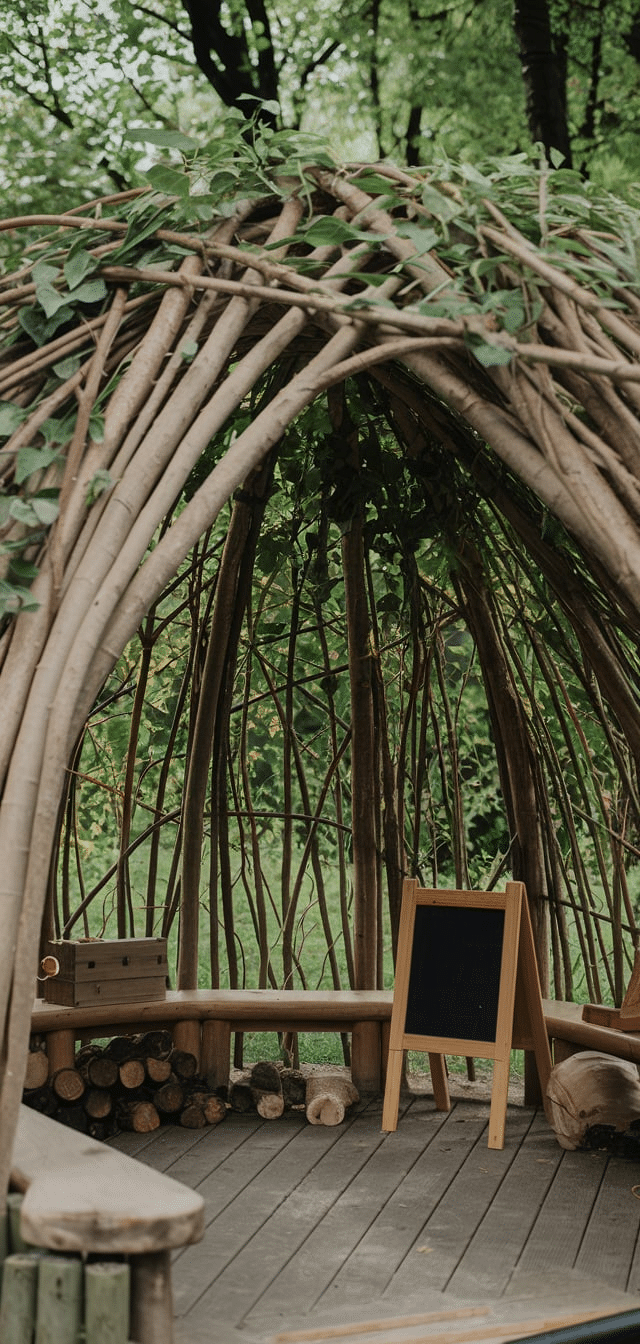
A sensory-rich structure that changes with the seasons, offering shelter, shade, and wonder.
Implementation Tips:
- Use freshly cut willow rods planted in a circular trench
- Weave rods into an arch as they grow
- Water regularly during the first summer
- Surround with mulch paths and native plantings
Added Engagement: Hang wind spinners or fairy lights from the interior.
9. Herb and Scent Garden
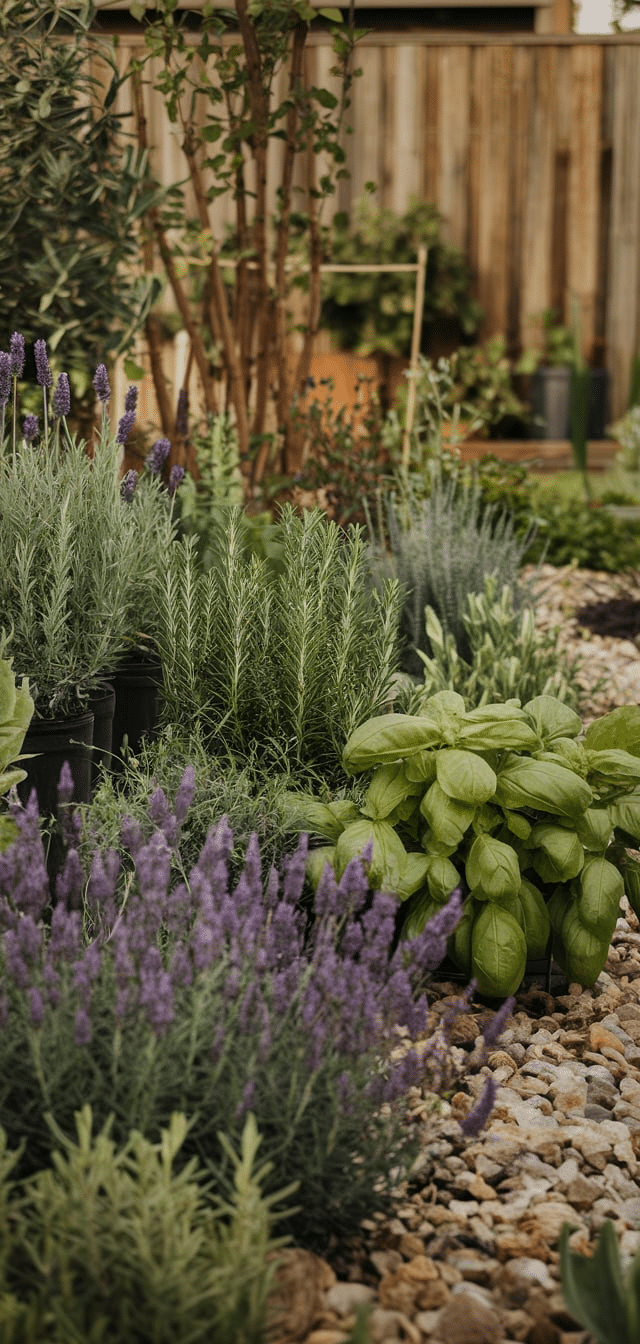
Appeal to the sense of smell while teaching plant identification, care, and sensory mindfulness.
Essential Herbs:
- Lavender, rosemary, mint, lemon balm, thyme, basil
Design Tips:
- Raised beds or half barrels for accessibility
- Include plant labels with scent descriptions
- Encourage leaf rubbing and sniffing during lessons
8. Texture Walkways
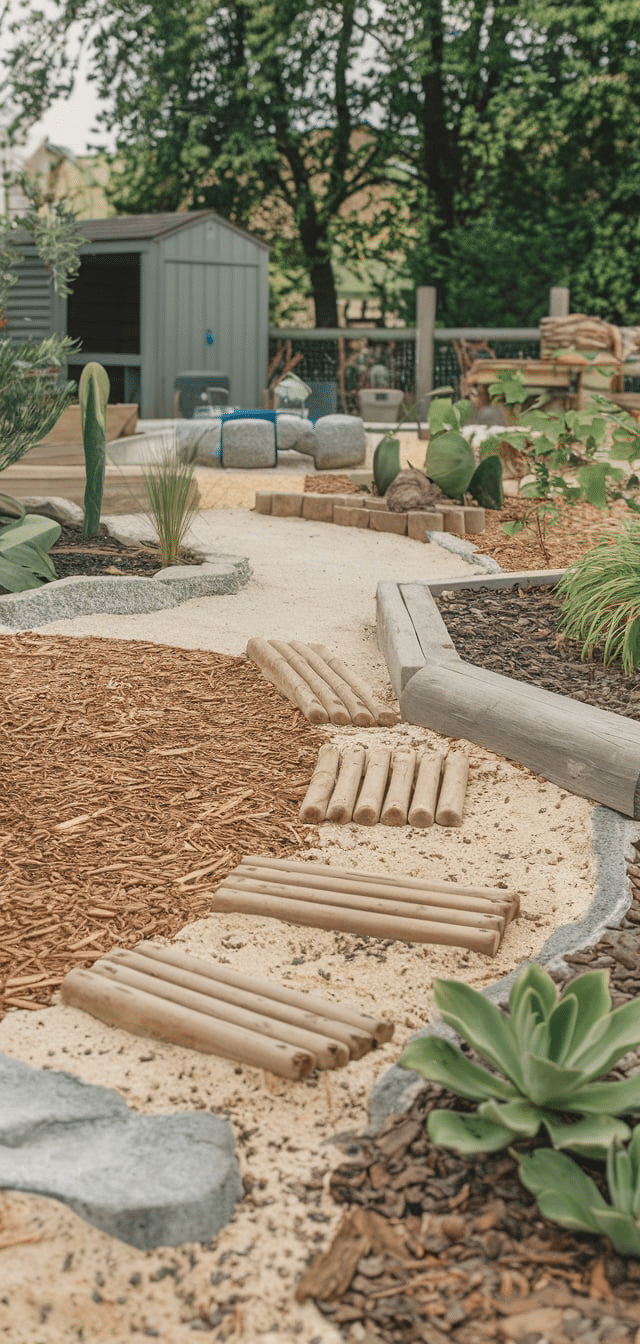
Walkways made of alternating textures invite foot or hand exploration.
Suggestions:
- Pebble mosaics, cork tiles, soft grass, river stones, rubber pavers
- Arrange in winding, exploratory patterns
Safety Tip: Ensure non-slip surfaces for rainy days.
7. Outdoor Light and Shadow Play Area
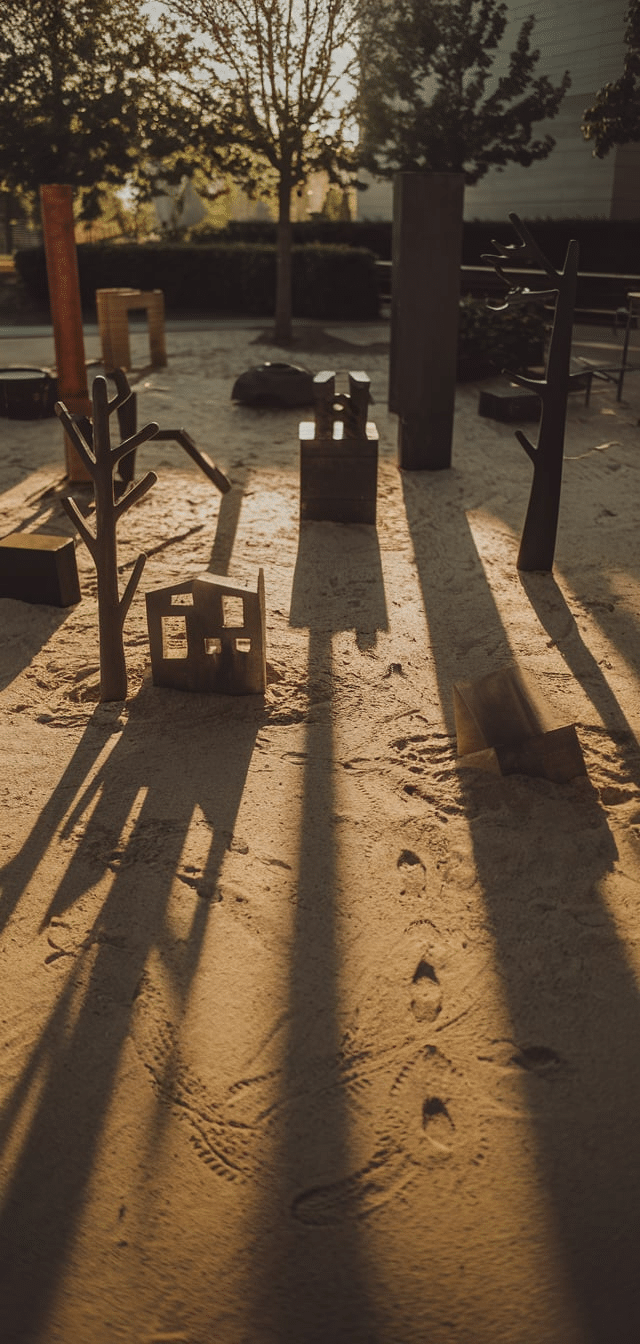
Stimulate visual processing through natural and artificial light experiments in outdoor learning spaces.
Components:
- Transparent colored panels
- Mirrors of various sizes
- Hanging prisms and reflective mobiles
- A “shadow wall” for projecting body outlines
Best Setup Location: A partially shaded area that receives afternoon sun.
6. Sensory Swing Zone
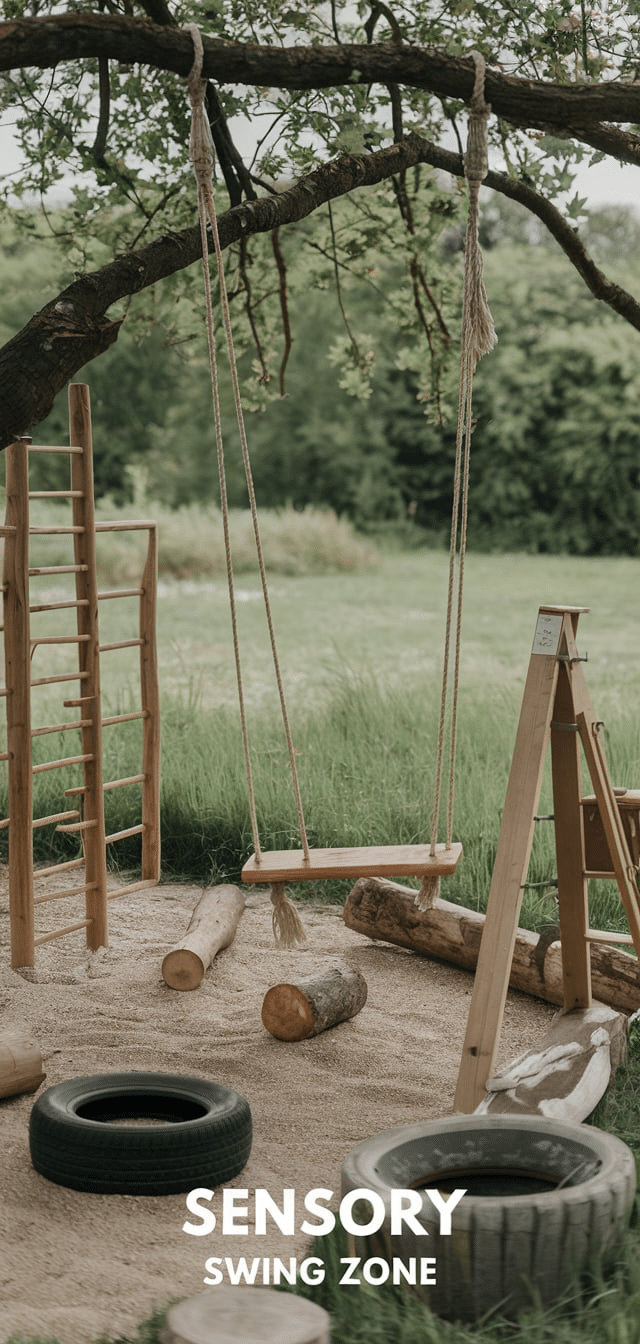
Rhythmic motion supports vestibular development and self-regulation in outdoor learning spaces.
Options to Install:
- Pod swings
- Platform swings for multiple children
- Sensory cocoon swings
Frame Considerations:
- Use heavy-duty wooden or metal A-frames
- Provide cushioning beneath with rubber mulch or soft grass
5. Water Play Station
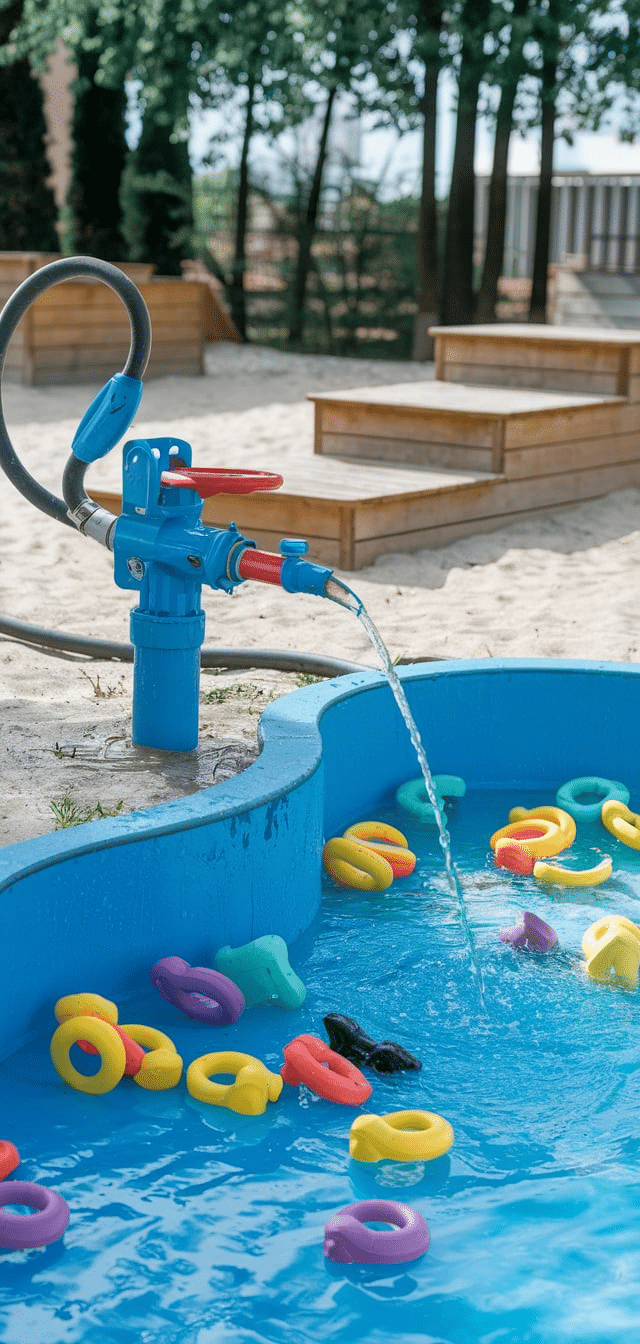
A versatile station that includes pouring, pumping, and splashing offers rich sensory exploration in outdoor learning spaces.
Simple Setup Ideas:
- Water table with scoops and funnels
- PVC pipe maze for pouring
- Recycled gutters with flow control valves
Add-On Feature: Collect rainwater in barrels to model sustainable practices.
4. Edible Landscape Zones
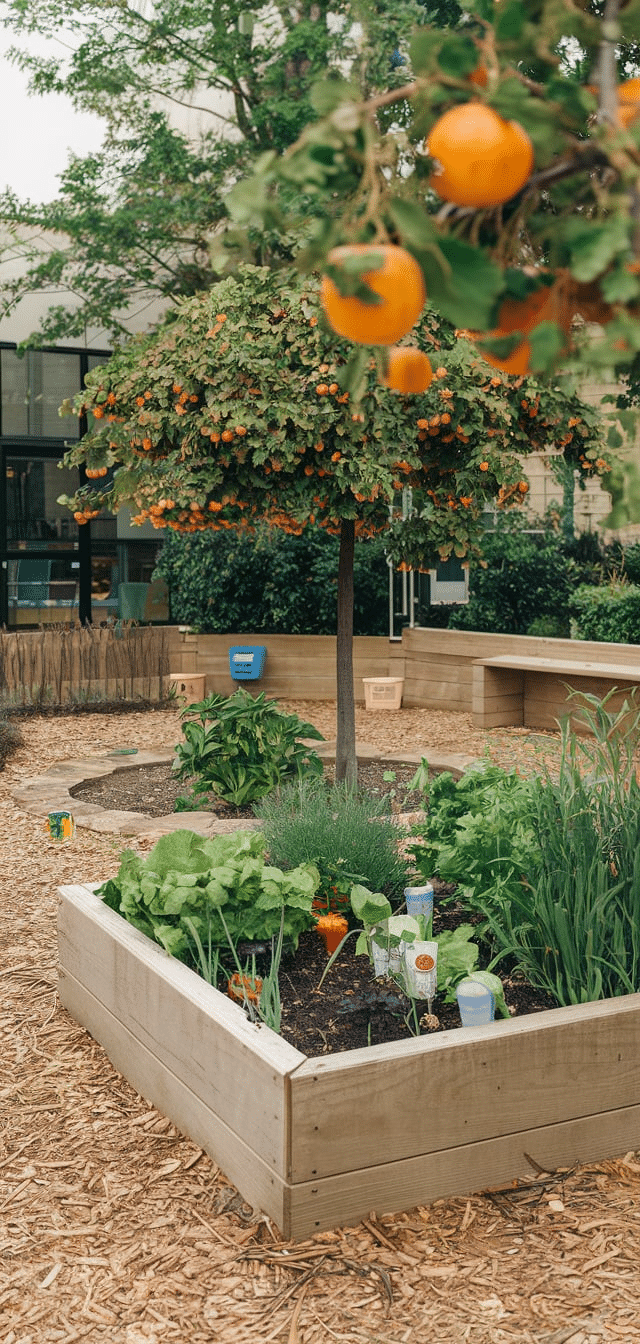
Encourage tasting, touching, and observation with safe-to-eat plants in your outdoor learning spaces.
Kid-Friendly Plants:
- Cherry tomatoes
- Snap peas
- Strawberries
- Nasturtiums
- Kale
Layout Tip: Combine vertical gardens, trellises, and small raised beds near seating for supervised access.
3. Balance and Movement Trails
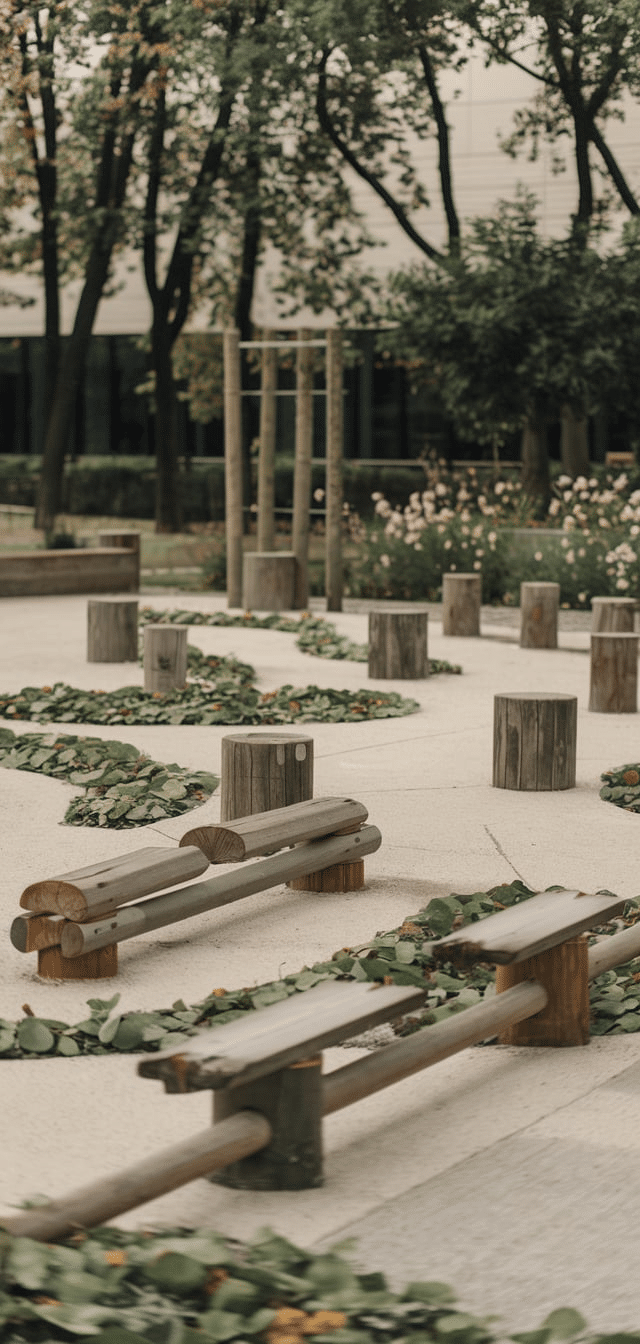
Kinesthetic learning is encouraged through low-risk physical challenges, making outdoor learning spaces ideal for engaging the body and mind simultaneously.
Materials to Include:
- Tree stump steps
- Balance beams made from reclaimed lumber
- Rope walking lines
- Wobble disks or tires partially buried in the ground
Accessibility Note: Ensure the ground is even and covered with soft mulch for cushioning.
2. Natural Loose Parts Zone
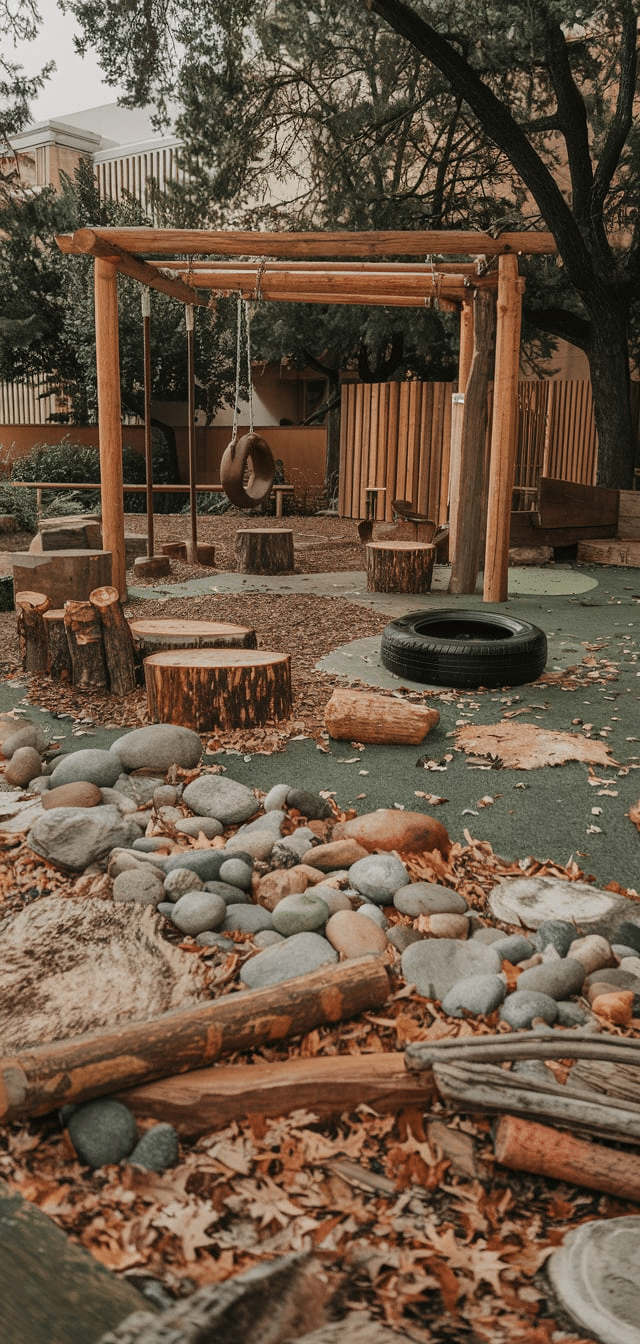
Support creativity through an open-ended material collection, a vital feature of outdoor learning spaces that encourages imagination, experimentation, and hands-on exploration.
Materials to Offer:
- Pinecones, acorns, bark pieces
- Driftwood, seed pods, feathers
- Shells, stones, sticks
- Fabric scraps and yarn
Storage Tip: Use low bins, crates, or shelving to make parts visible and reachable.
1. Mindfulness Garden or Quiet Corner
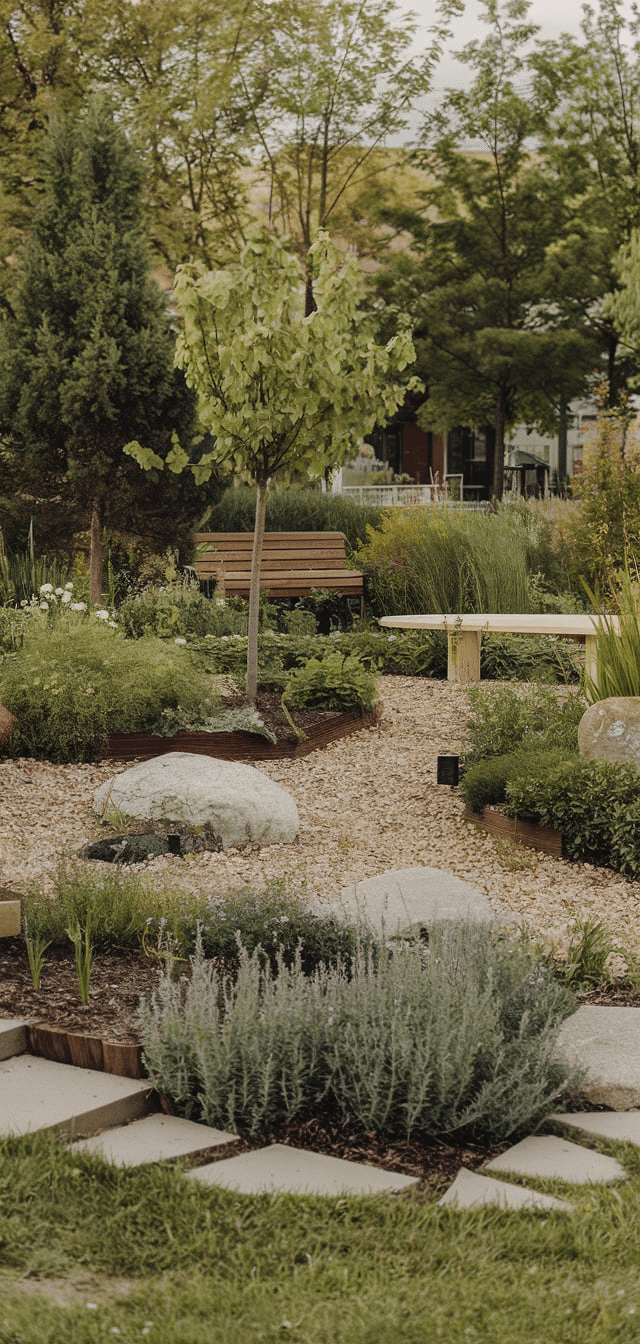
A calm, reflective space supports emotional regulation and focused learning, key benefits of well-designed outdoor learning spaces that nurture the whole child.
Design Ideas:
- Seating circles with logs or large stones
- Gentle wind chimes
- Fountains or bird baths for white noise
- Journaling boards or drawing easels
Add Living Decor: Butterfly-attracting plants or calming lavender patches.
Conclusion
Well-designed sensory outdoor learning spaces enhance development, accessibility, and engagement for children of all ages and abilities. By integrating textures, sounds, scents, movement, and edible elements, we create multi-sensory environments that fuel discovery and joy. These 14 ideas offer a comprehensive foundation for transforming outdoor areas into interactive educational oases.





